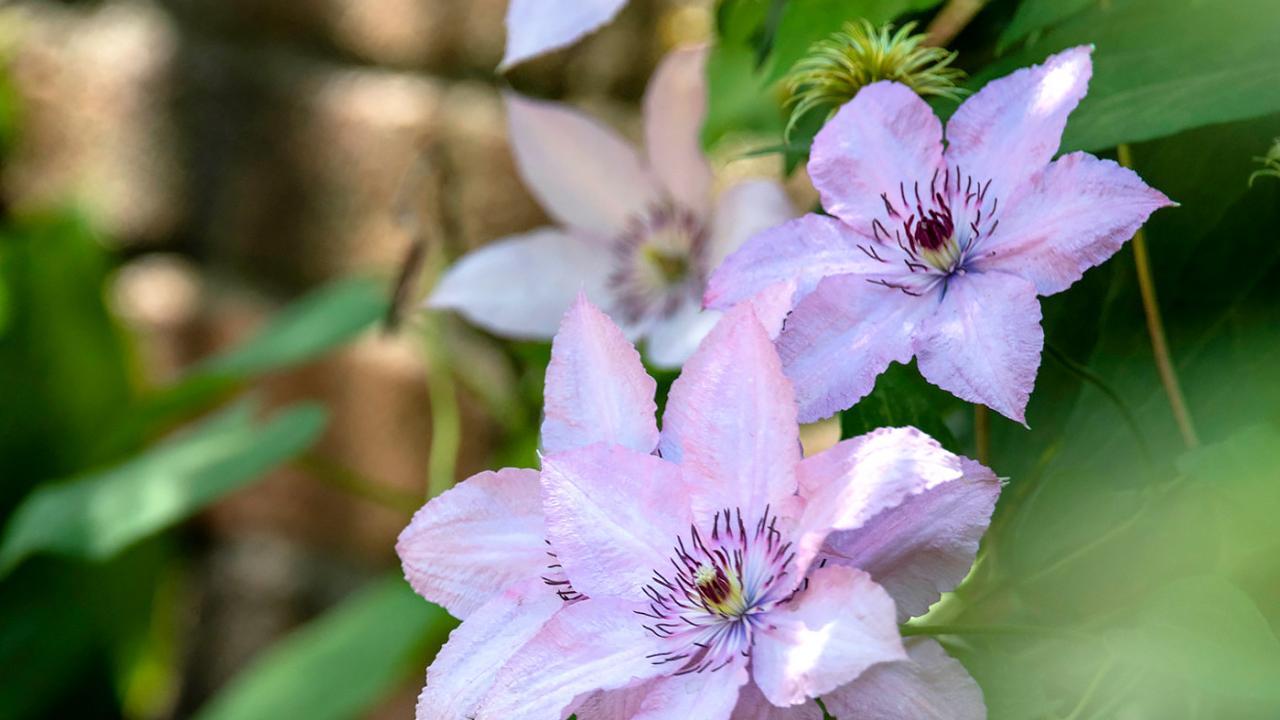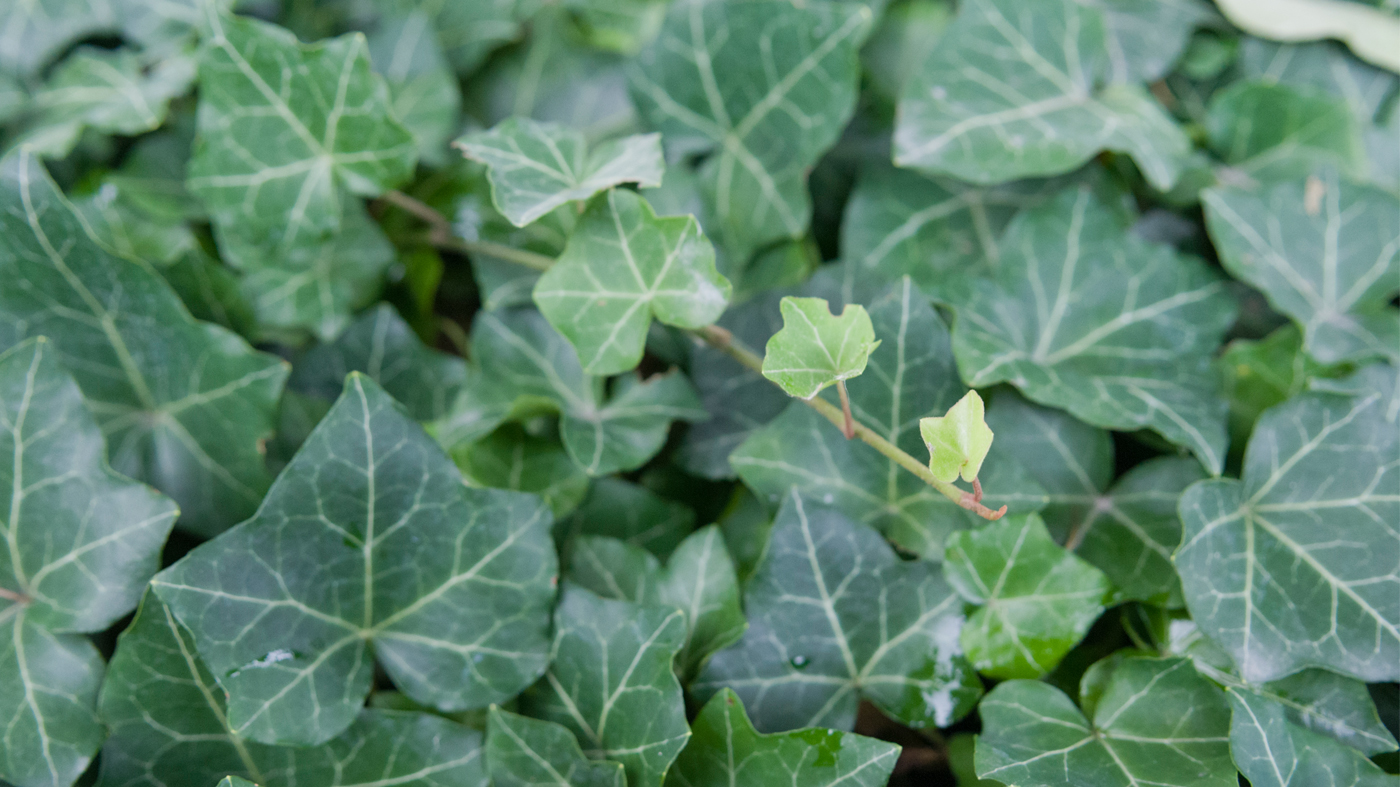

Vines
Vertical vines bring an added dimension to gardens–they soften hardscape, conceal unpleasant structures and provide lushness, through their foliage and flowers, to sites where other plants would find it difficult, if not impossible, to grow.
Vines can be used as green screens, filling in the diamond holes of a chain link fence, or they can be the flowering focal point on a backyard trellis, an elaborate arbor or a simple support stuck in the ground. Vines require very little lateral room at planting time since their growth is mostly up and outward. They can work their way into tight spots before breaking loose on a vertical climb.
Not all vines grow in the same manner, but most require a good support to look and grow their best. Some larger vines, such as climbing hydrangea, Boston ivy or English ivy, send out hundreds of hairlike rootlets from their main stems. These rootlets stick to cement, brick, wood and even metal. In the case of climbing hydrangea, rootlet strength is such that homeowners in brick homes who value their tuckpointing are advised to weigh the benefits of the vine (attractive greenery on stone, cooling effect in summer) against the potential disadvantages (rootlets can penetrate mortar).
Other woody perennial vines, such as honeysuckle, wisteria and grapevine, wrap around poles, fences or overhead arbors. Many annual vines, including morning glories, jasmine and hyacinth bean vine, as well as perennial clematis, are twiners, requiring an open lattice, grillwork or open fencing where their delicate tendrils can clasp and climb.











